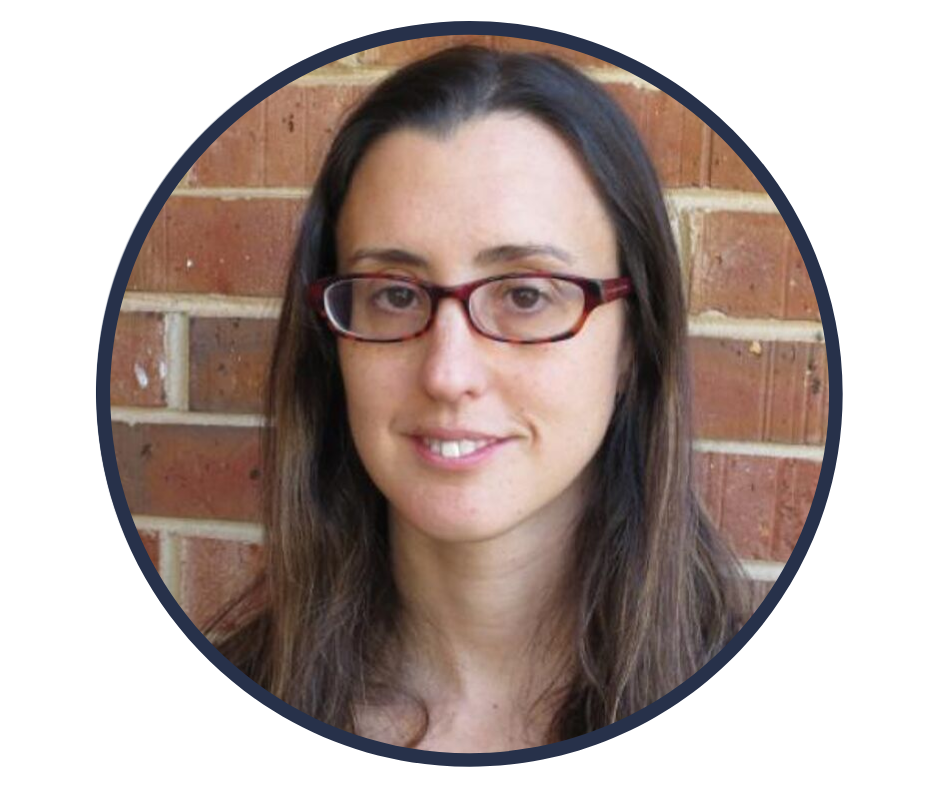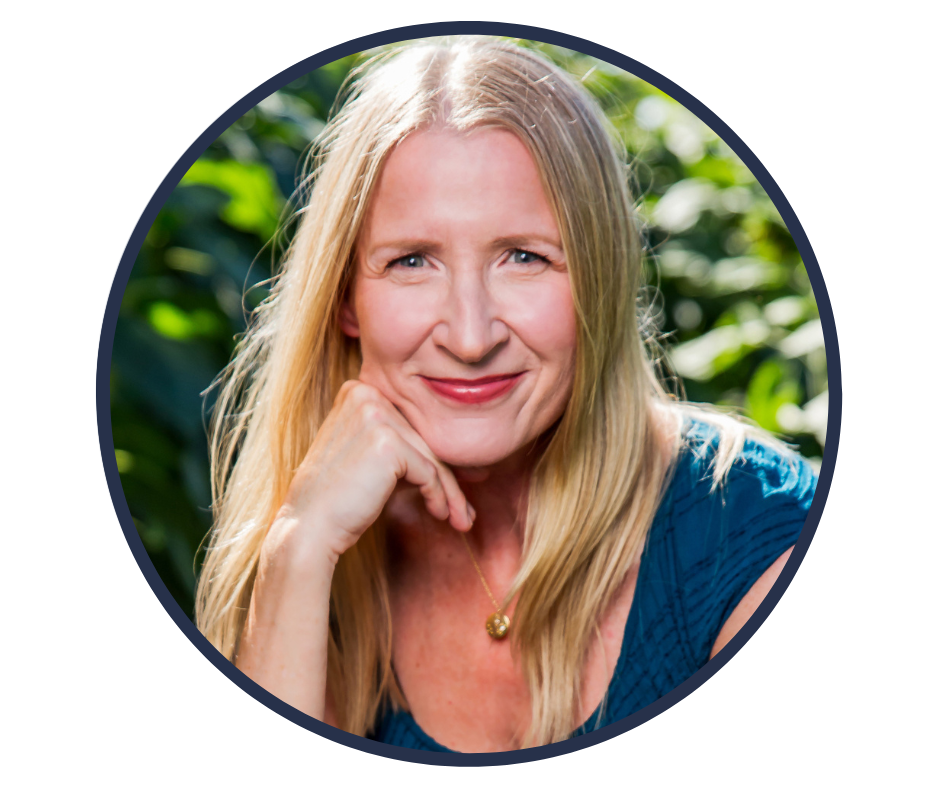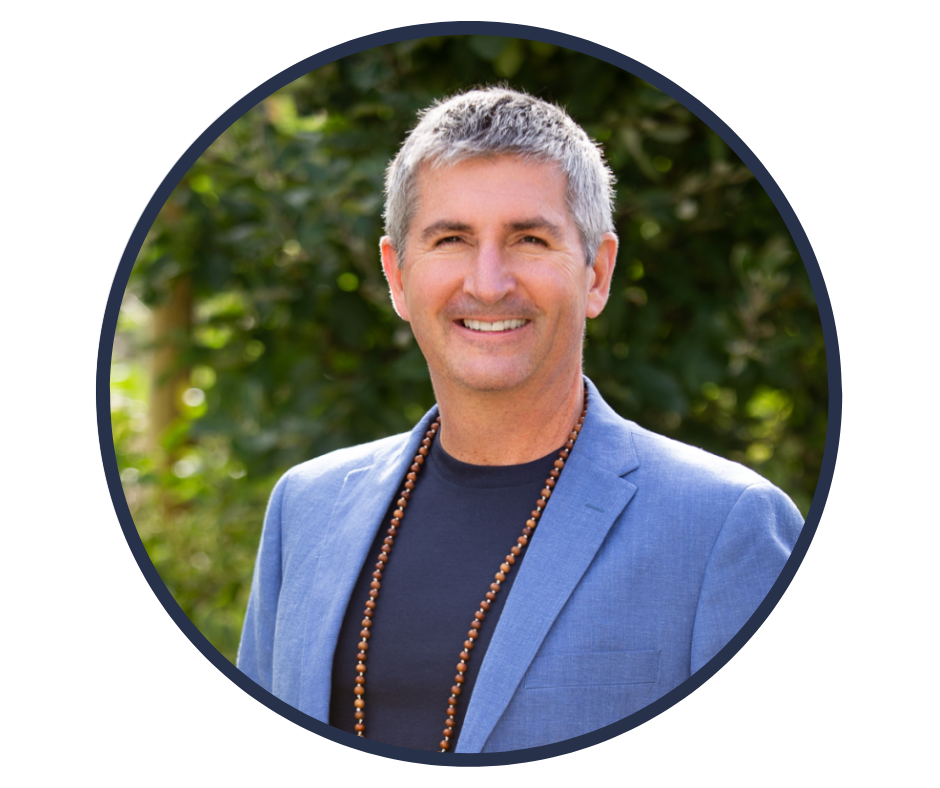Yoga and Science in Pain Care - The Role of Yoga in Evidence-Informed Pain Care
By: Linnea Thacker, MSc(PT), DMA ∙ Estimated reading time: 6 minutes
By: Linnea Thacker, MSc(PT), DMA ∙ Estimated reading time: 6 minutes

This is the 9th blog post in a series based on the Yoga and Science in Pain Care Book Club, a 15-part course based on the book by the same title, by Neil Pearson, Shelly Prosko, and Marlysa Sullivan. You can find the blog corresponding to Chapter 1 here.
Introduction - Yoga and Science in Pain Care Chapter 2
There’s a new hip tool being used in pain care these days. Generally speaking, this new tool seems to be at least as effective as our standard workhorses, at least as safe (Tick et al., 2018), and often better adhered to (Saper et al., 2017).
Oh, and by “new,” I mean it’s thousands of years old. Give or take.
As you may have guessed from the blog title, we’re talking about yoga.
We have entered a time when an increasing number of people are practicing yoga and healthcare providers are increasingly referring patients to yoga for various health conditions. And for good reason.
There’s a growing body of evidence supporting the use of yoga in healthcare, especially in pain care. You can delve into this topic in great detail in the Embodia course Yoga and Science in Pain Care (based on the book of the same title).
For those interested in exploring the research around yoga in pain care, the second chapter, “Current Research in Yoga and Pain” by Steffany Moonaz does a great job of synthesizing the current state of research on using yoga for various pain-related health conditions.
Chapter 2: Current Research in Yoga and Pain
You may be feeling a little skeptical about how yoga fits into a healthcare provider’s evidence-informed practice, and you wouldn’t be alone. As we tackle this topic together, a useful first step would be to explore what exactly we mean when we say “evidence-informed practice”.
A Quick History of Evidence-Informed Practice (EIP)
When we look at the history of evidence-informed practice, we are naturally drawn back to the concept of evidence-based medicine (EBM), a practice with philosophical origins that reaches at least as far back as mid-19th century Paris. In their 1996 article “Evidence-Based Medicine: What it is and What it Isn’t”, Sackett et al. describe EBM as follows:

While including the best available evidence in healthcare decisions sounds like a step in the right direction, EBM has not been without its critics.
One concern voiced by critics relates to the type of evidence that is prioritized (namely randomized controlled trials), as EBM tends to place a heavy emphasis on quantitative research over qualitative research that may explore patients’ experiences. Even before the term was coined, some medical professionals expressed concern over the direction that medicine was headed, by seemingly replacing individualized, patient-led care with scientific reductionism.
One such voice was that of Paul Tournier, a Swiss general practitioner (1898-1986). Here’s one such account of Tournier’s views:

Anyone who read the first blog in this series will recognize that Tournier was on to something. As the quote from a medical resident in Rice et al.’s 2018 article states: “within the [medical] curriculum…we don’t talk about how to actually care for someone without trying to cure them” (p. 777).
Well done, Tournier. You called it. Unfortunately.
An Alternative Approach
In response to these criticisms, the concept of evidence-informed practice (EIP) has emerged. This approach decentres scientific evidence as the primary factor on which healthcare decisions should be made. Instead, this approach is typically seen as having three equally-weighted components:
- Clinician expertise
- Best available evidence
- Patient preferences, rights, and values
EIP lends itself more intuitively to person-centred care and tends to be the preferred term used by clinicians today to denote a practice “informed by rather than one based on the E of EBM and where the person or the patient returns to the very center of the clinical encounter” (Miles and Loughlin, 2011, p. 534).
So How Does Yoga Philosophy Fit into Evidence-Informed Practice (EIP)?
Having explored some of the philosophical bases of EIP, we may wonder how a practice like yoga, with its rich philosophical history, fits into this contemporary (largely Western) approach. In an article from 2017 entitled “Understanding yoga’s roots in evidence-informed practice,” Marlysa Sullivan et al. explore Samkhya philosophy (a philosophy that has played a foundational role in the development of yoga, yoga therapy, and Ayurveda), and how it relates to EIP.
While the details of these overlapping philosophies can be explored in greater depth in the article, Sullivan et al. make a strong argument that incorporating yoga within an evidence-informed practice is by no means antithetical to yoga philosophy, but rather can align quite nicely with it.
Specifically, the article explores the three components of discriminative knowledge within the Samkhya framework (perception, inference, and reliable or valid testimony), and elucidates their relationships to the three components of EIP. The authors even present a graphic to illustrate the overlapping qualities of the three elements of Samkhya with the three elements of EIP:

This brief article is well worth the read if the topic is of interest!
Yoga and the Evidence
So now that we’ve explored EIP and how it relates to yoga philosophy, do we even have evidence to support the use of yoga in pain care?
The short answer is YES.
While there have been decidedly fewer high-quality research studies investigating the use of yoga for pain care compared to other, more conventional interventions, the studies that have been conducted overwhelmingly support yoga as a safe option that is at least as effective as currently used interventions.
At least as effective? But we want more effective!
Sure, that would be wonderful, but let’s keep in mind how research works. In order to convincingly demonstrate that an intervention is more effective than no intervention, we need to be able to show a clear difference in outcomes in the two (or more) groups that can’t be realistically attributed to chance. When the intervention is effective, it’s not too hard to show that, oh look, almost everyone who got the treatment ended up doing much better than almost everyone who got no treatment. Fancy that. (Okay, that’s a bit of a lie, it is hard to show that, but less hard than what comes next.)
Now, when we are looking to compare one intervention against an already-proven-to-be-effective intervention, the differences in outcomes between the two treatment groups are going to be much smaller. It then becomes harder to convincingly say that those differences can’t be attributed to chance. It certainly can be done, but it generally needs many more participants to be able to reveal the trend in a compelling way.
And the reality is, we just don’t have a lot of studies on yoga interventions with massive sample sizes, yet.
Other Challenges
It’s also worth noting that there are many different components to yoga, types of yoga, and ways to deliver yoga. Yoga as an intervention could include all or any one of:
- Breathing practices
- Movement practices, which could be geared towards:
- Strength
- Stability
- Mobility
- Relaxation/restoration
- Regulation (nervous systems, emotions, energetic states, etc.)
- Awareness (interoceptive, proprioceptive, etc.)
- Balance
- Neuromotor timing
- Coordination, agility, dexterity, etc.
- Chanting practices
- Meditative practices
- Lifestyle practices
- Integrating yoga principles
With such diversity in what could be included in a yoga intervention, clear and transparent reporting becomes critical. Unfortunately, yoga interventions have not always been clearly reported in the research, making it more difficult to apply interventions clinically or to summarize findings across studies.
The good news is that steps are being taken to improve the quality of reporting in yoga research, notably through the 2021 publication of the CLARIFY guidelines.
These guidelines comprise a 21-item checklist considered the minimum details necessary for high-quality reporting of yoga research. (And in case you think the lead author’s name is familiar, you would be right. Steffany Moonaz is both the lead author of the CLARIFY guidelines and the author of Chapter 2 of Yoga and Science in Pain Care.)
Yoga and Science in Pain Care Book
So What Do We Know About Yoga in Pain Care?
If you’re looking for an efficient summary of the state of research on yoga for pain care without doing a full literature review yourself, Steffany’s chapter in 'Yoga and Science in Pain Care' is a great place to start.
If listening to someone is more your style, she covers all the highlights in the Yoga and Science in Pain Care Embodia course:
Yoga and Science in Pain Care Book Club Series
In both forms, she goes through the evidence supporting the use of yoga for neck pain, low back pain, arthritis, neurological pain (including fibromyalgia, headaches, multiple sclerosis, and chronic fatigue syndrome), and abdominal pain (including irritable bowel syndrome and endometriosis).
Given the challenges associated with studying the effects of yoga in pain care, we already have an impressive body of evidence supporting yoga’s inclusion in healthcare, and that supporting evidence seems only to be mounting.
Something for us to consider as we take stock of our current pain care tools and consider what other options exist that are effective, accessible, safe, and feasible for our patients that may also be of interest, value, and empowering to them.
Click here to learn more about Chapter 2
of Yoga and Science in Pain Care
or
Click here to view the complete series
References:
Miles, A., & Loughlin, M. (2011). Models in the balance: Evidence-based medicine versus evidence-informed individualized care. Journal of Evaluation in Clinical Practice, 17, 531-536. https://doi.org/10.1111/j.1365-2753.2011.01713.x
Moonaz, S. (2019). Current research in yoga and pain. In N. Pearson, S. Prosko, & M. Sullivan (Eds.), Yoga and science in pain care (pp. 37-51). Jessica Kingsley Publishers.
Moonaz, S., Nault, D., Cramer, H., & Ward, L. (2021). CLARIFY 2021: Explanation and elaboration of the Delphi-based guidelines for the reporting of yoga research. BMJ open, 11(8), e045812. https://doi.org/10.1136/bmjopen-2020-045812
Rice, K., Ryu, J. E., Whitehead, C., Katz, J., & Webster, F. (2018). Medical Trainees’ Experiences of Treating People With Chronic Pain: A Lost Opportunity for Medical Education. Academic Medicine, 93(5), 775–780. https://doi.org/10.1097/ACM.0000000000002053
Sackett, D. L., Rosenberg, W. M. C., Gray, J. A. M., Haynes, R. B., & Richardson, W. S. (1996). Evidence based medicine: What it is and what it isn’t: It’s about integrating individual clinical expertise and the best external evidence. British Medical Journal, 312(7023), 71-72.
Saper, R. B., Lemaster, C., Delitto, A., Sherman, K. J., Herman, P. M., Sadikova, E., Stevans, J., Keosaian, J. E., Cerrada, C. J., Femia, A. L., Roseen, E. J., Gardiner, P., Barnett, K. G., Faulkner, C., Weinberg. J. (2017). Yoga, physical therapy, or education for chronic low back pain: A randomized noninferiority trial. Annals of Internal Medicine, 167(2), 85-94.
Sullivan, M., Finlayson, D., & Moonaz, S. (2017). Understanding yoga’s roots in evidence-informed practice. Yoga Therapy Today, Summer 2017, 40-41.
Tick, H., Nielsen, A., Pelletier, K. R., Bonakdar, R., Simmons, S., Glick, R., Ratner, E., Lemmon, R. L., Wayne, P., & Zador, V. (2018). Evidence-based nonpharmacologic strategies for comprehensive pain care: The consortium pain task force white paper. Explore, 14(3), 177-211. https://doi.org/10.1016/j.explore.2018.02.001
---
Written: 1 Feb 2023
Last update: 9 Dec 2025

MScPT, DMA
Linnea Thacker, MScPT, DMA is a physiotherapist, yoga instructor, and the founder of Nurtured Wellness. She has completed training in pelvic health and persistent pain, and is rostered with the College of Physiotherapists of Ontario to perform internal pelvic floor physiotherapy.
Linnea has been teaching yoga for a decade, and appreciates how her yoga instruction and physiotherapy work have allowed her to bring her various passions together, including working with people who are seeking greater function, comfort, and ease of movement; working with people through pregnancy and the postpartum period; and working with performing artists. In addition to a Master’s of Science in Physical Therapy, Linnea holds a Doctor of Musical Arts degree, with a research focus on ways of incorporating health promotion in music education.
When not taking additional courses or working with clients, Linnea enjoys playing with and learning from her young children, making music, practising yoga, and being outside in nature. Linnea also loves food (and cooking) and welcomes any recipe recommendations!

MPT, C-IAYT
Marlysa is a physiotherapist and yoga therapist with over 15 years of experience working with people suffering with chronic pain conditions. She is an Assistant Professor in Yoga Therapy and Integrative Health Sciences at Maryland University of Integrative Health and holds an adjunct position at Emory University, where she teaches the integration of yoga and mindfulness into physical therapy practice in the DPT program. She is also the author of Understanding Yoga Therapy: Applied Philosophy and Science for Well-being and co-editor of Yoga and Science in Pain Care: Treating the Person in Pain as well as several peer-reviewed articles.
Marlysa has been involved in the professionalization of the field of yoga therapy through the educational standards committee of IAYT, which helped to define the competencies for the field, and in characterizing the yoga therapy workforce through research. Her research interests focus on defining the framework and explanatory model for yoga therapy based on philosophical and neurophysiological perspectives.

PT, C-IAYT, PCAYT
Shelly has been helping people recover and flourish since 1998 as a physiotherapist, yoga therapist, educator, author and pioneer of PhysioYoga, blending evidence-informed body-mind-breath-spirit-heart centered practices and principles, such as yoga, into physiotherapy with a focus on chronic pain, pelvic health, compassion in healthcare and professional burnout. She is on faculty at several therapy programs, presents at medical conferences globally, contributes to academic research and writing, provides classes, courses and resources for the general population, and offers continuing education courses and mentorship for professionals.
She considers herself a lifelong student and emphasizes the immense value gained from clinical experience and learning from those she serves, the professionals she teaches, and the colleagues with which she collaborates.
Shelly is the co-editor/author of the book Yoga and Science in Pain Care: Treating the Person in Pain and has authored numerous book chapters in a variety of rehabilitation textbooks.
She maintains a clinical practice in Sylvan Lake, Alberta and believes compassion (including self-compassion), meaningful connections, spending time in nature and sharing joy are powerful contributors to rehab and well-being.
Visit www.PhysioYoga.ca to learn more.

PT, MSc(RHBS), BA-BPHE, C-IAYT, ERYT500
Neil is a physical therapist, yoga therapist, author, researcher, Clinical Associate Professor at the University of British Columbia, faculty in three IAYT-accredited yoga therapy programs, board member for the International Association of Yoga Therapists and pain care advocate. He conducts research into the effects of yoga on veterans with chronic pain and people with osteoarthritis. Neil is the recipient of awards honouring his work in pain care, patient education and physiotherapy by Queen’s University, the Canadian Pain Society and both provincial and national physiotherapy associations, including the Canadian 2021 Medal of Distinction.
Neil is a consultant to Partners in Canadian Veterans Rehabilitation Services, and to Lifemark’s 300+ clinics in Canada. Neil is a past board member for Pain BC, Canada’s premier non-profit transforming the way pain is understood and treated. He co-authored – Yoga and Science in Pain Care 2019, authored the patient education ebook, Understand Pain Live Well Again in 2008, and is lead contributor to many free patient resources offer by Pain BC.
For more information and course offerings, see www.paincareaware.com

PhD, C-IAYT